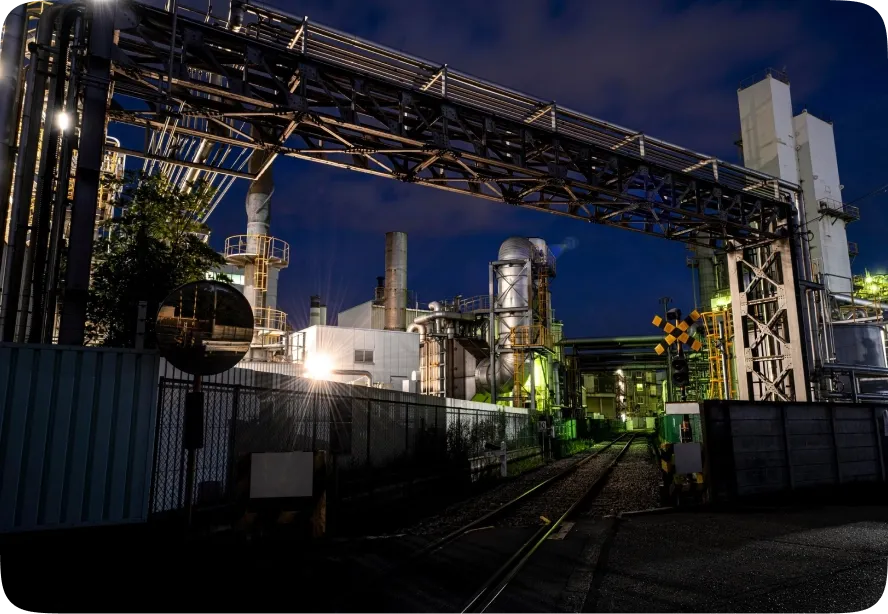 Bharat Mandapam, New Delhi, 110001
Bharat Mandapam, New Delhi, 110001 Bharat Mandapam, New Delhi, 110001
Bharat Mandapam, New Delhi, 110001Hi, I'm Purvi


The story of oil discovery in North East India, particularly in Assam, is not only a tale of industrial significance but also a pivotal moment in the region’s economic and infrastructural development. The discovery of oil in Digboi, Assam, during the late 19th century marked the beginning of India's oil industry and led to the creation of essential infrastructure, including the region's first railways, which were integral in transforming North East India into an industrial hub. Here's a more detailed account of how this unfolded.
The discovery of oil in North East India, was a pivotal moment in the region’s history that spurred industrial growth and led to the establishment of the first railways in the region. This early integration of industry and infrastructure not only transformed the local economy but also played a crucial role in the development of North East India’s connectivity with the rest of the country. The impact of this discovery continues to resonate today, with the oil industry and railways remaining central to the region’s economy and development.
The discovery of oil in Assam can be traced back to the 1860s when British colonial administrators noticed oil seepages in the dense forests of Upper Assam. It is believed that the name "Digboi" originated from the phrase “Dig Boy, Dig,” which British engineers used to encourage workers to dig for oil after spotting crude oil deposits near the area. In 1889, a small well was successfully drilled, and this marked the beginning of India's oil exploration journey.
However, the major breakthrough came in 1901 when the Assam Oil Company was established, and a refinery was built in Digboi, making it the oldest functioning oil refinery in Asia and the second in the world after Pennsylvania, USA. This small town in Upper Assam soon gained prominence, and Digboi earned its title as the "Oil City of Assam." By the early 20th century, Assam became the epicenter of India’s oil industry, producing crude oil that not only met domestic needs but also contributed to British industrial interests during the colonial era.

The discovery of oil in Assam can be traced back to the 1860s when British colonial administrators noticed oil seepages in the dense forests of Upper Assam. It is believed that the name "Digboi" originated from the phrase “Dig Boy, Dig,” which British engineers used to encourage workers to dig for oil after spotting crude oil deposits near the area. In 1889, a small well was successfully drilled, and this marked the beginning of India's oil exploration journey.
However, the major breakthrough came in 1901 when the Assam Oil Company was established, and a refinery was built in Digboi, making it the oldest functioning oil refinery in Asia and the second in the world after Pennsylvania, USA. This small town in Upper Assam soon gained prominence, and Digboi earned its title as the "Oil City of Assam." By the early 20th century, Assam became the epicenter of India’s oil industry, producing crude oil that not only met domestic needs but also contributed to British industrial interests during the colonial era.


The railway line between Margherita and Digboi, completed in 1882, was one of the earliest railway lines in North East India. It connected the Digboi oil fields to the Brahmaputra River, enabling the efficient transportation of oil to the rest of India and for export. This railway was critical to the success of the oil industry and opened up further possibilities for trade and commerce in the region.

The success of the Digboi oil refinery and the growing oil production led to the expansion of railways throughout Assam. Over time, rail connectivity grew, connecting other parts of Assam and North East India to the rest of the country. By the early 20th century, the region was integrated into the broader railway network, and the railway system played a key role in the development of tea plantations, coal mining, and other industries in the region.
The establishment of the oil industry in Digboi and the creation of supporting infrastructure like railways triggered industrial growth in Assam. Besides oil, the region also witnessed the rise of tea plantations, coal mining, and timber industries, further boosting the local economy.

The oil industry provided employment opportunities and spurred economic growth in the region. The influx of workers, traders, and industrialists led to the growth of towns like Digboi, Margherita, and Dibrugarh, which became important economic centers in Assam.

The region's strategic importance grew manifold, especially during the British colonial period. The availability of oil made Assam a valuable resource for the British Empire, and the railways facilitated faster troop movement and supply logistics during World War II, especially during the battles of Kohima and Imphal.

The railways not only facilitated the transportation of oil but also improved the overall connectivity of North East India. What was once a remote and inaccessible region became more connected to mainland India, helping in the exchange of goods, culture, and ideas. It also laid the groundwork for further infrastructural development, such as roads and bridges, in the 20th century.

Today, the legacy of the oil discovery in Digboi and the introduction of railways continues to shape the region. The Digboi refinery, now managed by the Indian Oil Corporation, remains operational and stands as a symbol of India's industrial heritage. The town of Digboi has preserved its historical significance, with its colonial-era buildings and the Digboi Oil Museum, which showcases the history of oil exploration in the region.
The railways, which began as a means to transport oil, have now become an integral part of North East India's transportation network. The expansion of rail services has connected many parts of Assam and the neighboring states, facilitating trade, tourism, and economic growth.
